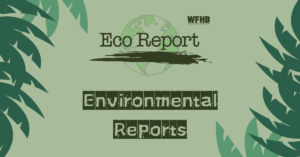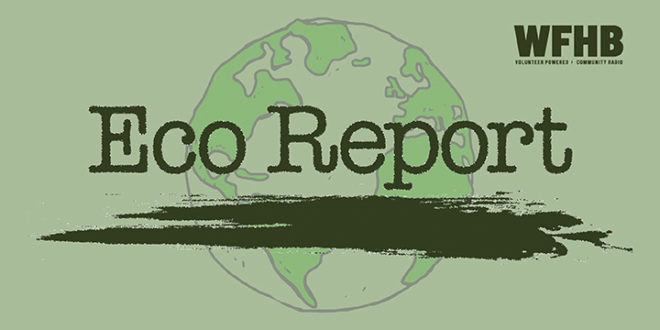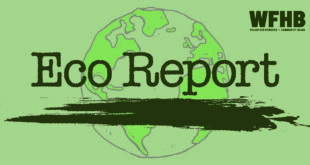Podcast: Play in new window | Download (Duration: 29:06 — 26.7MB)
In this edition of Eco Report, Maggie Sullivan, Watershed Coordinator for the Friends of Lake Monroe, shares how healthy the lake is and how long it will survive.

- Take a Lake Ogle Hike at Brown County State Park on Saturday, April 13th, from 2 to 3:30 pm. Enjoy a guided hike on Trail 7 and hear the history of the lake and learn about the flora and fauna around the lake
- Enjoy a Birdwatching for Beginners hike at Griffy Lake Nature Preserve on Saturday, April 13th, from 7:30 to 9:30 am. Birdwatching is a low-cost, relaxing and fun way to enjoy the outdoors. Wear comfortable shoes and dress for the weather. Register at bloomington.IN.gov/parks
- One of the best locations to see spring wildflowers in bloom is at Monroe. Enjoy a Salt Creek Wildflowers Hike on Wednesday, April 17th, from Noon to 2 pm. You will get to see the rare white-blooming Virginia Bluebells along with other species. Sign up at bit.ly/saltcreekflowers2024
- A Global Climate Strike is taking place on Sunday, April 21st, from 4 to 4:30 pm at the Monroe County Courthouse. Come with signs and support!
- Learn all about skulls at the Who’s Skull Is That program at McCormick’s Creek State Park on Friday, April 19th, from 10 to 10:45 am. You can learn a lot about an animal from its skull. Meet at the Nature Center
Credits:
Environmental Report was written by Norm Holy and Julianna Dailey
Eco Report Feature was produced and edited by Kade Young
Julianna Dailey compiled the events calendar
Kade Young and Noelle Herhusky-Schneider produce Eco Report
Branden Blewett engineers Eco Report
Julianna Dailey and Frank Marshalek hosted this week’s Eco Report
Are you looking for a way to make a difference on environmental issues? Eco Report is looking for reporters, engineers, and segment producers who are passionate about reporting facts on how we’re all affected by global climate disruption and the ongoing assaults on our air, land and water. We also celebrate ecologists, tree huggers, soil builders and an assortment of champions who actively protect and restore our natural world, particularly those who are active in south central Indiana. All levels of experience and all ages are welcome, and we provide the training you’ll need. WFHB also offers internships. To volunteer for Eco Report, give us a call at (812) 323-1200, or e-mail us at: [email protected]. Are you one of those people who believes our Mother Earth is getting dirtier and dirtier from all our trash? Here are a few tips to help keep the Earth cleaner.
Are you one of those people who believes our Mother Earth is getting dirtier and dirtier from all our trash? Here are a few tips to help keep the Earth cleaner.- Stop buying Styrofoam items. Styrofoam is forever. It is not biodegradable, so instead invest in some reusable mugs that you can take with you.
- Do you like to eat salmon? Several studies have found that PCB’s, which is a class of toxic chemicals, and other environmental toxins are present at higher levels in farm raised salmon than wild salmon. Look for safe seafood when shopping for salmon.
- What about those coffee filters? Are you a coffee drinker? Dioxins, chemicals formed during the chlorine bleaching process, contaminate groundwater and air and are linked to cancer. Start buying unbleached paper filters or use reusable filters.
- We all love to go to picnics, especially when the weather is nice. The next time you host or attend a picnic, bring your own utensils and food containers. Plastic forks, spoons, straws, and all that plastic stuff you see at a picnic are not biodegradable and not recyclable.
- One more thing you might want to stop using is paper towels. Regular paper towels are bleached, and waste forest resources and landfill space. Look for recycled, non-bleached paper towels or better yet, buy dishtowels or rags to wash and reuse.
 WFHB Bloomington Community Radio
WFHB Bloomington Community Radio


